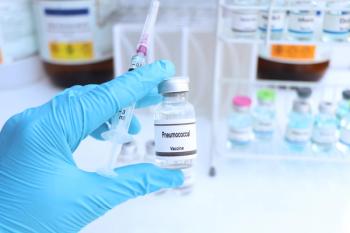
FDA Approves COVID-19 Vaccines for Patients 65 Years and Older
The approved vaccines include Novavax’s Nuvaxovid and Moderna’s Spikevax and mNexspike.
Following the approval of Pfizer and BioNTech’s updated COVID-19 vaccine, the FDA approved 2 other updated COVID-19 vaccines for the 2025-2026 season. Both Novavax’s Nuvaxovid and Moderna’s Spikevax and mNexspike have been approved for adults 65 years and older to prevent COVID-19.1,2
"Protecting people at increased risk of severe outcomes from COVID-19 is imperative to public health, as COVID-19 was responsible for up to 4 million outpatient visits and nearly half a million hospitalizations last year," Stéphane Bancel, CEO of Moderna, said in a news release.2 "We are proud to help ensure Americans will have the latest protection against currently circulating strains this respiratory virus season."
Nuvaxovid, which is protein-based instead of mRNA-based, was also approved for patients aged 12 through 64 years with at least 1 underlying condition that places them at a high risk for severe disease. Previous data showed that Nuvaxovid is safe and effective for the prevention of COVID-19, with new data showing that the vaccine induces immunity across the JN.1 lineage, including NB.1.8.1, LP.8.1, XFG, XFC, LF.7, and XEC.1
For Spikevax, the FDA also approved the vaccine for patients 6 months through 64 years at high risk of severe disease with at least 1 underlying condition, and mNexspike is approved for patients aged 12 through 64 years at high risk with at least 1 underlying condition.2
In May 2025, the FDA’s Vaccines and Related Biological Products Advisory Committee met to recommend the 2025-2026 formulations for COVID-19 vaccines. They recommended a monovalent JN.1-lineage vaccine, with a preference for the LP.8.1 strain.3
In addition to the Novavax and Moderna vaccines, the
In
In a recent meeting of the Advisory Committee on Immunization Practices, the committee did not hold a vote on COVID-19 vaccine recommendations. However, they did discuss efficacy, including that 89% of children who were eligible for the COVID-19 vaccine and were hospitalized did not receive the most recently recommended COVID-19 vaccines.5
“The majority of children hospitalized with COVID-19 in October 2024 to March 2025 did not receive the most recently recommended COVID-19 vaccine,” Adam MacNeil, PhD, MBA, deputy branch chief for epidemiology in the CDC's Coronavirus and Other Respiratory Viruses Epidemiology Branch, said in the panel.5 “Roughly 10% of children across all pediatric age groups have received their recommended COVID-19 [20]24-[20]25 dose.”
READ MORE:
Ready to impress your pharmacy colleagues with the latest drug information, industry trends, and patient care tips? Sign up today for our
REFERENCES
1. Novavax's Nuvaxovid 2025-2026 formula COVID-19 vaccine approved in the US. News release. Novavax. August 27, 2025. Accessed August 28, 2025. https://prnmedia.prnewswire.com/news-releases/novavaxs-nuvaxovid-2025-2026-formula-covid-19-vaccine-approved-in-the-us-302540339.html
2. Moderna receives US FDA approval from updated COVID-19 vaccines targeting LP.81.1 variant of SARS-CoV-2. News release. Moderna. August 27, 2025. Accessed August 28, 2025. https://feeds.issuerdirect.com/news-release.html?newsid=6729249760870595&symbol=MRNA
3. COVID-19 vaccines (2025-2026 formula) for use in the United States beginning in fall 2025. FDA. Updated May 22, 2025. Accessed August 27, 2025. https://www.fda.gov/vaccines-blood-biologics/industry-biologics/covid-19-vaccines-2025-2026-formula-use-united-states-beginning-fall-2025
4. Gallagher A. FDA approves updated 2025-2025 COVID-19 vaccine for patients 65 years and older. Drug Topics. August 27, 2025. Accessed August 28, 2025. https://www.drugtopics.com/view/fda-approves-updated-2025-2026-covid-19-vaccine-for-patients-65-years-and-older
5. Gallagher A. Updated COVID-19 mRNA vaccine did not increase risk for adverse events. Drug Topics. July 29, 2025. Accessed August 28, 2025. https://www.drugtopics.com/view/updated-covid-19-mrna-vaccine-did-not-increase-risk-for-adverse-events
Newsletter
Pharmacy practice is always changing. Stay ahead of the curve with the Drug Topics newsletter and get the latest drug information, industry trends, and patient care tips.








